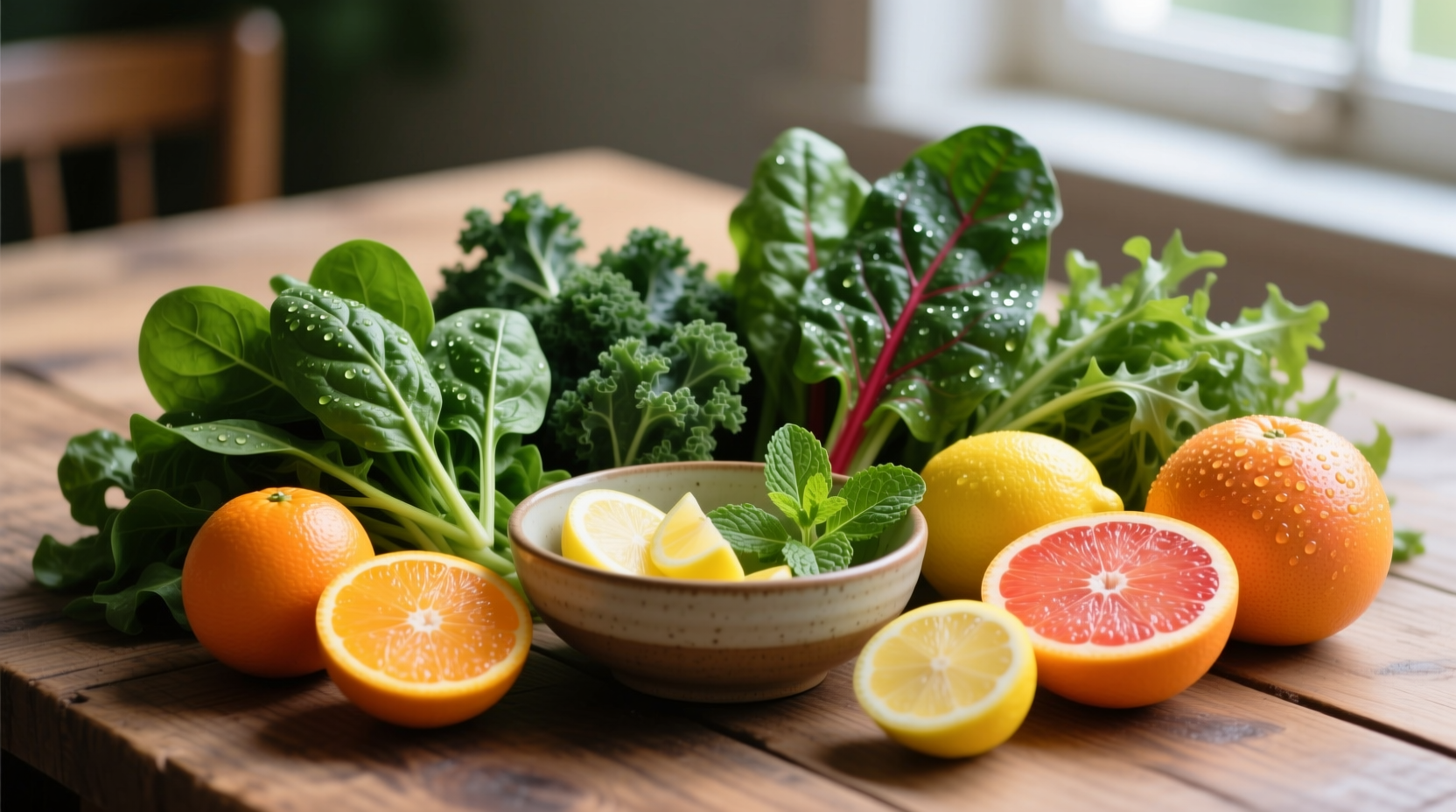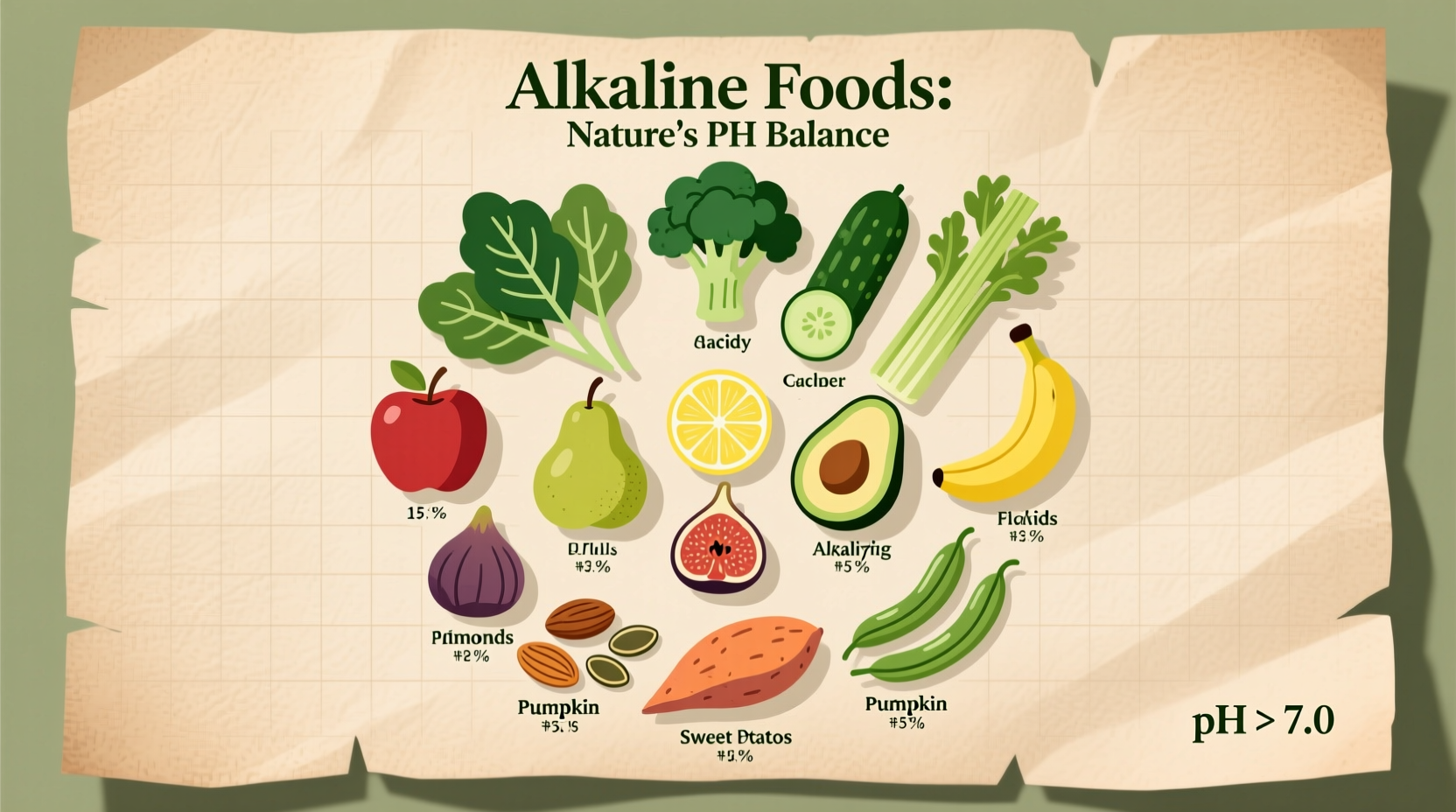Discover exactly which foods create an alkaline environment in your body after digestion, backed by nutritional science rather than trendy diet myths. This comprehensive guide cuts through misinformation to deliver a practical, evidence-based alkaline food list you can actually use—without making exaggerated health promises.
Understanding Food Alkalinity: Beyond the pH Hype
When discussing "alkaline foods," we're referring to the potential renal acid load (PRAL)—how foods affect your body's acid-base balance after digestion. Despite lemons tasting acidic, they produce alkaline byproducts during metabolism. The human body maintains blood pH between 7.35-7.45 through sophisticated regulatory systems, primarily using kidneys and lungs.
According to research published in the American Journal of Clinical Nutrition, plant-based foods generally have negative PRAL scores (alkaline-forming), while animal proteins and grains typically have positive PRAL scores (acid-forming). This scientific framework helps us objectively categorize foods without making unsupported health claims.
| Food Category | Alkaline-Forming Examples | PRAL Score Range |
|---|---|---|
| Leafy Greens | Spinach, kale, Swiss chard, arugula | -6.1 to -10.3 |
| Citrus Fruits | Lemons, limes, grapefruit | -2.0 to -2.6 |
| Root Vegetables | Beets, sweet potatoes, carrots | -3.4 to -5.2 |
| Nuts & Seeds | Almonds, chestnuts, chia seeds | -1.0 to -2.3 |
| Cruciferous Vegetables | Broccoli, cauliflower, Brussels sprouts | -2.7 to -4.1 |
PRAL scores based on USDA National Nutrient Database calculations. Lower (more negative) scores indicate stronger alkaline-forming potential.

Alkaline Food Categories: What Actually Makes the List
Leafy Greens: The Alkaline Powerhouses
Spinach ranks as one of the most alkaline foods with a PRAL score of -10.3. Kale (-8.7), Swiss chard (-8.5), and arugula (-6.1) follow closely. These nutrient-dense greens provide magnesium and potassium—minerals that help neutralize acids in the body. The Harvard T.H. Chan School of Public Health confirms that increased vegetable consumption correlates with better metabolic health, though they caution against oversimplifying the mechanisms (source).
Citrus Paradox: Why Lemons Are Alkaline-Forming
Despite their initial acidity (pH 2-3), lemons and limes become alkaline-forming after metabolism due to their mineral content. When metabolized, they leave behind alkaline ash composed mainly of potassium and magnesium. This explains why lemon water is often recommended in alkaline diets. Research in the Journal of Environmental and Public Health notes that while citrus fruits don't alter blood pH, their high potassium content supports kidney function in maintaining acid-base balance.
Common Misconceptions About Alkaline Foods
Several foods are frequently mislabeled as alkaline. Avocados (PRAL -0.8) and tomatoes (PRAL +2.0) fall in the neutral-to-slightly-acid range despite popular claims. Bananas (PRAL -5.5) are genuinely alkaline-forming, but dried fruits often lose this quality due to concentration of natural sugars. The National Institutes of Health clarifies that food processing significantly impacts PRAL values, with cooking methods altering mineral availability.
Practical Alkaline Eating: What Science Actually Supports
While the "alkaline diet" promises dramatic health transformations, the scientific consensus is more measured. A systematic review in Nutrition Reviews found that alkaline-forming diets correlate with higher fruit and vegetable intake—which we know independently supports health—but found no evidence they alter systemic pH.
What does work: incorporating more alkaline-rich foods naturally increases your intake of vitamins, minerals, and antioxidants. Registered dietitians recommend focusing on these evidence-based benefits rather than pH manipulation:
- Replacing processed snacks with almonds and pumpkin seeds
- Adding spinach to smoothies (one cup provides 157mg potassium)
- Using lemon juice instead of vinegar in dressings
- Choosing sweet potatoes over refined carbohydrates
The Scientific Perspective on Alkaline Diets
Medical professionals emphasize that healthy kidneys maintain blood pH within a narrow range regardless of diet. The Mayo Clinic states: "Your body does such a good job of keeping your pH in balance that there's little you need to do—and no need to follow a special diet" (source).
Where alkaline-focused eating shows real benefit is in its emphasis on whole, plant-based foods. The Dietary Guidelines for Americans consistently recommend increasing vegetable and fruit consumption—not for pH manipulation, but for proven nutritional benefits. This alignment with established dietary advice explains why many people report feeling better when following alkaline food principles.
Frequently Asked Questions
Do alkaline foods actually change your body's pH?
No, healthy kidneys and lungs maintain your blood pH within a strict range (7.35-7.45) regardless of diet. Alkaline foods support kidney function by providing minerals that help process acids, but they don't alter your actual blood pH.
Is lemon water really alkaline-forming?
Yes, despite lemon's initial acidity (pH 2-3), it has a negative PRAL score (-2.6) meaning it produces alkaline byproducts during metabolism. The citric acid metabolizes into bicarbonate, which has an alkalizing effect.
What vegetables are most alkaline?
Spinach is the most alkaline vegetable (PRAL -10.3), followed by kale (-8.7), Swiss chard (-8.5), and arugula (-6.1). Cruciferous vegetables like broccoli (-4.1) and cauliflower (-2.7) also rank highly.
Can you eat meat on an alkaline diet?
Meat has a positive PRAL score (beef +9.5, chicken +8.7), meaning it's acid-forming. While some alkaline diet versions allow small portions of lean meat, the most alkaline-focused approaches emphasize plant-based proteins like almonds and lentils.
Does apple cider vinegar make your body alkaline?
No, apple cider vinegar has a PRAL score of +1.7, making it slightly acid-forming. While some claim it has alkalizing effects, scientific evidence doesn't support this. Its potential health benefits relate to other properties, not pH alteration.











 浙公网安备
33010002000092号
浙公网安备
33010002000092号 浙B2-20120091-4
浙B2-20120091-4